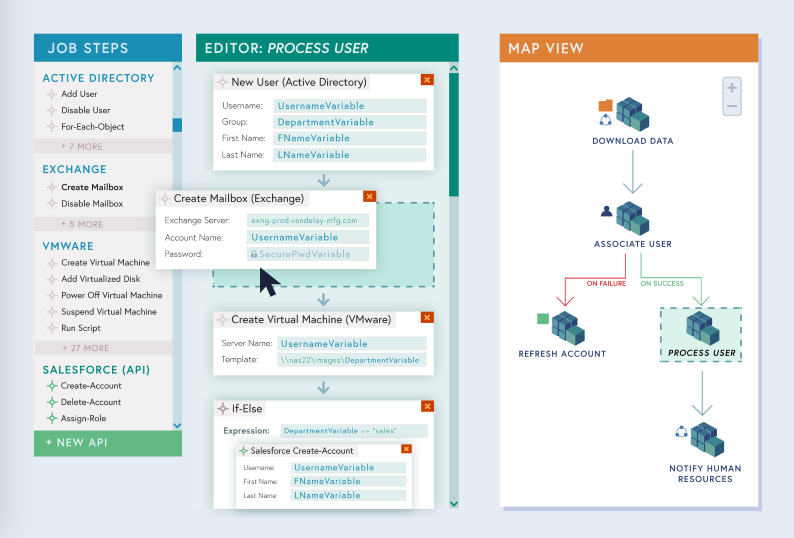Good Reasons For Picking Legacy application modernization with Low-code
Good Reasons For Picking Legacy application modernization with Low-code
Blog Article
Advantages Of Low-Code Application Development In Terms Of Speed
Visual Development Environment:
Drag-and-Drop Interfaces: Low-code platforms provide visual tools for designing applications. Developers can make use of drag-and-drop elements to create applications quickly and without writing extensive code.
Many low-code platforms have already-built templates and parts. This lets developers quickly build or prototype applications, without having start from scratch.
Coding Requirements Reduced
Automated code generation: Low-code platforms create the codes that are used to build them based on models that are visual and maintained by programmers. This eliminates the requirement for manual code writing and accelerates the process of development.
Reusable Components: Developers may make use of reusable components across various projects, thus reducing the time spent on writing and testing code.
Collaboration can be made easier.
Integrated Development Tools : Low code platforms typically include tools to test as well as deployment, version control and. They facilitate collaboration among teams.
Citizen Development: Users of businesses and non-developers can contribute to the development of applications using simple interfaces, thus reducing bottlenecks often caused by limited accessibility of professional developers.
Rapid prototyping and rapid iteration:
Fast Prototyping. Developers can design prototypes quickly to validate their ideas as well as get feedback. This can lead to a more efficient iteration.
Easy Modifications: The visually-oriented design of low-code programming makes it easy to make changes and updates to applications, which speeds up the process of improving and refining applications based on feedback from users.
Pre-built Integrations:
API Integrations: Low-code platforms usually come pre-built with connectors to popular APIs and services. This reduces the time required to integrate other systems.
Data Integration: Built in tools for data-integration make it easier to connect databases and other data sources. This speeds up development.
Deployment and Scaling:
One-Click Installation: Many low code platforms offer the option of installing with one click, reducing the amount of effort and time required to set up applications.
Cloud-based Solutions: Cloud platforms with low-code let developers focus on the design and function of their apps instead of worrying about deployment logistics.
The primary benefit of developing applications using low-code in terms of speed, is its capacity to automate and simplify a variety of aspects of the process. This allows for quicker delivery of applications and faster adaptations to evolving demands. View the most popular Low-code Platform for application development for blog info including rapid applications, cross platform mobile development, microsoft azure sql, azure sql server, develop web application, push alerts, sso azure, mobile development platforms, push notifications android, azure sql server and more.
Low-Code Software Is Cost-Effective.
Low-code development offers a number of advantages in terms of cost-effectiveness. Companies seeking to reduce costs are able to benefit from this option while delivering quality applications. The following are some key advantages.
Less Coding Needed: Low-code platform makes it less necessary to write long manual code. This means less time and effort of developers while developing their applications. It also means lower costs for labor.
We require fewer resources for developers: Programming with low-code is more efficient and quicker, so there are fewer developers who have specialized knowledge are required. This can cut down on hiring and staffing costs.
Speedier time to market
Rapid development cycle Visual tools for development and pre-built components provided by platforms that use low-code allow rapid application design, allowing companies to deliver products to market faster. This can result in quicker revenue growth and better competitive positioning.
Rapid Prototyping. By rapidly creating and testing prototypes, businesses can speed up developing and develop faster on user feedback.
Lower maintenance costs:
The modular design and standard components of applications developed with low-code platforms make them easier to maintain. It reduces the cost of maintenance and support.
Automated updates: Many low-code platforms automatically manage patches and updates, ensuring that applications are secure and up-to-date with no need for a lengthy manual intervention.
Efficient Resource Utilization:
Contributions from non-developers Low-code platforms permit people who are not developers to be part of the process of development. This democratization enables enterprises to profit from the expertise of a broad variety of employees.
IT departments can focus on Strategic Initiatives instead, of being caught up in routine tasks of development IT departments are able focus their efforts on strategic initiatives to increase the efficiency and productivity of their departments.
Scalable Pricing Models
Subscription pricing: Many low-code platforms provide different subscription pricing options that increase with use. This allows businesses to alter their budgets in line with their needs and growth without the need to incur large upfront expenses.
Pay-as-you-go Options Certain platforms offer pay-as you-go options, ensuring that companies only pay for the resources they use and can be especially advantageous for small and start-up companies with a limited budget.
Reduced costs of third-party software:
Low-code platforms are often equipped with integrated functionalities that eliminate the need to purchase additional software or tools. This can help you save cash on subscriptions and licensing fees.
Pre-Built Integrations with popular platforms and services You can save time and money by not having the requirement to create custom integrations.
Increased ROI
Faster Return On Investment: A combination of rapid development and lower costs, coupled with speedier time to market will allow businesses to earn higher return on their investment.
Improved Agility: Businesses can rapidly adapt to market trends and demands of their customers, ensuring that they stay relevant and can capitalize on new opportunities as they arise.
Lower Training Costs
User-Friendly Interfaces: Low code platforms are user-friendly and have simple interfaces, which decreases the learning curve.
Accessible Resources. Many low-code platforms provide extensive training materials, tutorials, as well community support. They make it less necessary to attend formal training which is costly.
A more efficient collaboration
Improved Collaboration Tools: The integration of collaboration tools enables improved communication between team members as well as the reduction of project overhead.
Unified Development Environment. A single integrated software development environment could streamline processes and decrease the cost and complexity of managing different software and platforms.
The overall cost-effectiveness of developing low-code applications stems in its ability to lower development and maintenance costs, accelerate the time to market, improve the utilization of resources, and offer flexible pricing models. These factors deliver significant financial advantages to companies and make low-code a compelling option for organizations looking to maximize their budgets and achieve quality, robust, and scalable apps. Follow the top here are the findings about Legacy application modernization with Low-code for website advice including driver jdbc, ms azure sql, developing mobile apps, push notifications, application development platforms, microsoft azure sql, push notifications android, lowcode no code, mobile app development platforms, develop web application and more.
Advantages Of Low-Code Application Development With Respect To Limitations And Customization
Low-code is an approach that is balanced and allows for substantial customization and overcomes limitations. Here are some benefits:
The Challenge of Overcoming Complexity Barriers
Simple Development : Low-code platform reduces the complexity of development by providing components and templates that have been pre-built, which allows to speed up creation and deployment.
Guided Workflows: Many platforms offer guided workflows and wizards to help developers navigate through complicated processes, reducing the risk of mistakes and guaranteeing consistency.
Scalability Solutions:
Scalability is built in: Low-code platforms typically include features that allow for scalable architecture. Applications can handle increasing workloads with minimal changes.
Performance Monitoring Tools: Instruments for monitoring and enhancing performance are built into the application to ensure it's efficient regardless of the size.
Security and Compliance
Integrated security features Low-code platform come with built-in measures of security, such as encryption. Access control that is based on roles and automated compliance check address the most frequent security concerns.
Regular updates: Platforms regularly upgrade their security protocols and compliance measures. This helps ensure that applications are protected against emerging threats.
Customization capabilities:
Extensibility:
Low-code Platforms Support Custom Code They allow the integration and usage of customized code.
Custom Modules and Plugins: Developers have the option of designing custom modules or plugins in order to tailor specific functions to meet the specific requirements of a particular business.
APIs and Integration
API Support - Complete support of APIs permits seamless integration with external services and systems and allows for complete customisation.
Third-Party Applications: Lowcode platforms are often pre-built with connectors for third-party apps, making it easier to integrate these applications and personalize the app.
Flexible Design of UI/UX:
Customizable Interfaces Developers are able to create and alter user interfaces based on specific usability and branding criteria, resulting in a customized user experience.
Responsive Web Design: Built-in design responsive capabilities allow applications to be customized according to the device and screen size.
Business Logic Customization
Visual Workflow Builders: Visual tools to design and customize workflows, business logic and processes allow developers to create complicated and customized processes without the need for programming.
Conditional Logic and Scripting: Platforms enable the integration of conditional logic as well as customized scripting to deal with specific business rules and scenarios.
Data Management:
Custom Data Models: Developers have the option to create customized data models for specific applications, adjusting data handling to specific business requirements.
Advanced Data Processing : Integration with the latest tools and capabilities to process data allows flexibility in the way data is processed, analyzed and used within your application.
Balance Customization and Limitations
Frameworks and Standards
Best Practices Compliance Low-code platforms promote the use of industry-leading practices and standards, which helps in maintaining high-quality, scalable, and secure applications.
Governance Frameworks: Integrated governance frameworks make sure that customizations don't affect the integrity, compliance or the security of an application.
Iterative Development and Feedback
Rapid Prototyping. The ability to quickly prototyping and testing modifications lets developers tweak the application according to user feedback. This helps refine the application to better satisfy the requirements of users.
Continuous Improvement: Low-code platforms allow for constant improvement. They can be modified and customized when business requirements change.
Empowering Users
Empowering Citizen Entwicklers by giving non-developers the ability to personalize their apps using intuitive interfaces and low-code platforms, they boost the number of users who can enhance and modify the application.
Training and Support Information: Many platforms offer an extensive set of training and support resources that allow users to modify applications without compromising their performance or stability.
Low-code development is a potent framework that allows for plenty of customization while addressing any shortcomings. This balance allows companies to build and maintain apps that are efficient, adapted to their particular requirements and adhere to high standards of quality, security, and scalability.